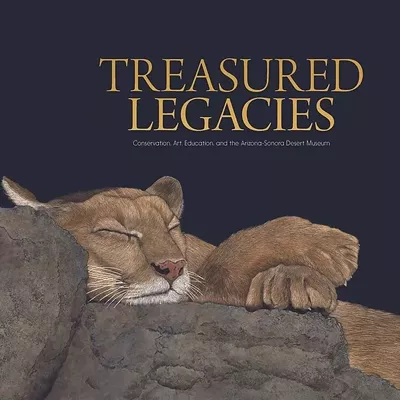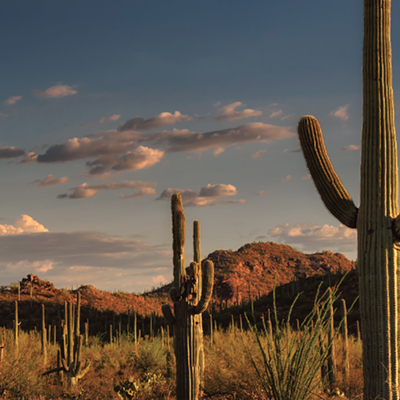ON A RECENT August morning, members and guests of the Santa Cruz River Alliance stood in the beating sun near the dry riverbed south of Tucson and listened attentively to a good-natured scolding from a well-spoken representative of the Tohono O'odham. The themes were familiar. White people tread heavily on Mother Earth, treating her natural resources with callous disrespect. By contrast, Native Americans have been, since time immemorial, intuitive, spiritual ecologists who live in harmony with Nature. Meekly chastened, the audience greeted its polite dressing-down with applause.
The Ecological Indian is a densely documented analysis of the sources for and accuracy of such claims. It's a fascinating topic, and even if this brief book weren't so readable, it would still be worth the time to study Shepard Krech's tour-de-force exercise in logical argumentation. It is refreshing to see historicist theorizing combined with a respect for the classical rules of clear thinking.
According to Krech, the currently popular image of the "ecological Indian" is a recent construct derived from "Keep America Beautiful" advertising campaigns of the 1970s, but with deep contextual roots in European self-criticism dating back several centuries. In North America, the literary and political interests of whites, typified by James Fenimore Cooper and Boy Scout founder Ernest Thompson Seton, established a powerful line of not inaccurate but essentially mythic perceptions of the "Noble Indian." Many Native Americans, Krech claims, have been culturally co-opted by uncritical acceptance of this image, and consequently marginalized or pitted against one another in important debates regarding tribal resource issues.
The facts, he says, present a messier, more complex picture. The bulk of his argument is a discussion of some specific cases. His method is to weigh evidence, which he accumulates from both Indian and European historical accounts, from sources in research archaeology and anthropology, and from popular journalism. He considers the material available on a couple of the hot topics, such as the possible responsibility of indigenous over-hunting for the Pleistocene extinctions, and what actually happened to the Hohokam. And he argues that in some cases, far from preserving resources, Native American spiritual and religious beliefs were at the heart of reckless, wanton waste. However, he has not set out to trash the reputation of the "ecological Indian." For instance, he makes the case that they were far ahead of Western scientific preservationists in the adept use of fire to manage the environment, and in general he makes no claims that European Americans have been great conservationists.
That's his central point, of course, that just like Europeans, indigenous Americans manipulated and altered the environment for what they perceived as their self-interest -- sometimes, but not always, successfully. The first European arrivals thought that what they were encountering in North America was pristine and primordial. True enough by comparison to their crowded, more urbanized homelands, but in fact they found an ecosystem marked by thousands of years of industrious human intervention.
Population density and the carrying capacity of various ecological regions is a thorny subject. Estimates of North America's human inhabitants before the European invasion vary widely -- from two million to 18 million. Any count is complicated by devastating epidemics which raged through native populations lacking immune resistance to new diseases, starting in the early 16th century and breaking in periodic waves during three centuries. Yet, some densely inhabited regions, such as southern Arizona, had already been dramatically depopulated long prior to that.
In a balanced chapter on the Hohokam, based primarily on archaeological research conducted by the University of Arizona and the Arizona State Museum, Krech discusses the astonishing irrigation practiced in the Salt and Gila River valleys until the beginning of the 15th century, when the people disappeared. Whether the Hohokam were masterful ecologists who survived here for centuries, as Emil Haury asserted, or whether they poisoned their land as a consequence of their advanced agricultural and water-management technology, is the question under interpretation. In light of the debate over CAP water, it's an argument with topical resonance.
The fate of white-tailed deer in the southeast, of beaver in Canada, and of the great bison herds on the Plains, all point in the same direction. Native Americans eagerly adapted to the prospects for trade brought by contact with Europeans. They rapidly exploited the "globalization" of the market for animal pelts, and without much conscience became key players in the near extermination of these species, essentially because they wanted products of European manufacture for personal use. Presented with the opportunity to commodify resources which had previously been subsistence staples, Indians participated with deadly avidity. In Canada, the Hudson Bay Company became alarmed by declining beaver populations in the early 1700s, and attempted to establish conservation practices against resistance among the Northern Algonquian tribes.
Additionally, Native Americans were not loathe to abandon traditional habits for new technology, and the law of unintended consequences kicked in. For example, when the burden of Plains Indian transportation shifted from dogs to horses after the Spanish conquest, tipis grew larger. Lodges that had previously used six to seven bison hides then required 12 to 20 hides. Increased mobility also reduced dependency on cured meat. Guns, steel traps, copper kettles, iron tools, and woven dry goods all had significant impact on Native American harvesting practices and resource consumption.
Krech explores some delicate matters. He gives respectful treatment to Native American hunting mores and taboos, and recognizes belief systems predicated on assumed kinship between humans and non-human beings. However, these beliefs were occasionally more harmful than not in their ecological impacts. Krech cites Indian interpretations of animal origins which posited a conviction that the more prodigious the slaughter of beasts such as caribou and bison, the more then that would come forth. He also provides provocative examples to deny the common view that indigenous hunters were scrupulous about the utilization of game -- not just of by-products, but of meat itself. One account estimates the per capita harvest to have been up to 60 pounds daily among Plains tribes, and the archaeological record shows that many carcasses were left to rot.
The Ecological Indian is outrageously politically incorrect. Shepard Krech, an anthropologist at Brown University who has lived among the Gwich'in and Métis in the Northwest Territories, acknowledges this ruefully. In an epilogue he argues that a false stereotype is racially and culturally harmful to the interests of Native Americans because it locks Indian resource issues into a paradigm created mainly by the white "ecology movement." He quotes one interviewee: "I like living in this community, and I like being a Choctaw, but that's all there is to it. Just because I don't want to be a white man doesn't mean I want to be some kind of mystical Indian either. Just a real human being."







